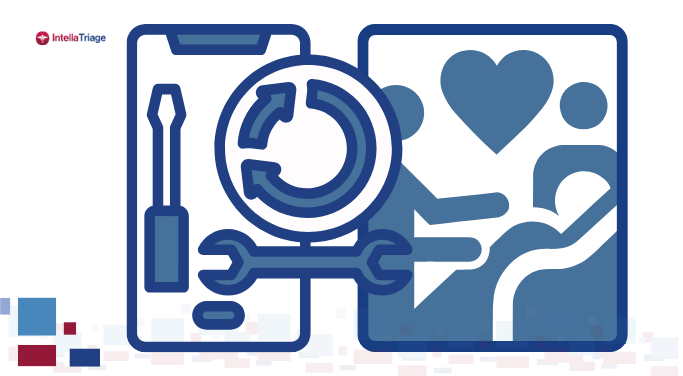In hospice care, nurse burnout is often treated like the weather: inevitable, unpredictable, and something we all just have to live with.
But what if it isn’t?
What if burnout isn’t just a symptom of emotional fatigue, but also a byproduct of structural design? A result of the way hospice teams are staffed, supported, and scheduled?
At a time when patient needs are rising and staffing pipelines are shrinking, it’s time to get serious about one of the most urgent (yet fixable) challenges facing hospice providers: nurse burnout.
The Real Cost of Losing One Nurse
When a hospice nurse resigns, the cost isn’t just financial (though that’s steep enough). Recruiting, onboarding, and temporary coverage for a single vacancy can run into the tens of thousands. But the deeper cost is continuity. Culture. Morale. Care quality.
In a small to mid-sized hospice organization, the departure of even one experienced nurse can reverberate across the entire team. Families notice. Colleagues absorb the extra caseload. And the remaining staff may begin to consider their own exit.
Burnout isn’t just a workforce issue. Burnout is a care quality issue.
The System, Not the Psyche
We often tell nurses to be more resilient. We offer wellness programs and “mental health days.” But the uncomfortable truth is that the biggest drivers of burnout aren’t emotional. They’re operational.
- Charting systems and regulations that prioritize documentation over presence
- Unmanageable caseloads without clinical backup
- Constant interruptions at the bedside and during off hours
- A lack of true emotional debriefing after deaths
These are design flaws, not personal weaknesses.
If your best nurses are withdrawing, emotionally exhausted, or avoiding on-call shifts, it’s not a failure of character. It’s a failure of system design.
Burnout Hides in Plain Sight
Not every burned-out nurse quits. Some stay but disengage. Formerly passionate team members begin doing only what’s required, avoiding extra tasks, pulling back from emotional involvement.
In hospice, this can look like:
- Task-focused visits instead of relational care
- Reluctance to take calls outside scheduled hours
- Less collaboration with the IDT
- Emotional flattening after losses
And once this mindset sets in, it can spread.
Hospice is inherently emotional work, but without emotional infrastructure, it becomes unsustainable work.
How After-Hours Expectations Contribute to Burnout
One common (and often overlooked) driver of burnout is the 24/7 expectation placed on hospice nurses. Even when not technically “on call,” many feel tethered to their phones, bracing for coverage gaps, last-minute schedule changes, or family calls that slip through the cracks.
That kind of chronic low-level vigilance is exhausting.
It’s also preventable.
Some organizations are finding relief by rethinking how after-hours care is managed. Outsourcing nurse triage to a specialized partner, one that integrates directly with the EMR and operates under clinical protocols, can give nurses real time off while preserving continuity for patients and families.
This doesn’t replace care. It extends it responsibly, ensuring patients receive timely, clinically appropriate guidance even when the local team is offline.
Why Debriefing Should Be Standard in Hospice
Emergency departments and trauma units often conduct debriefings after intense cases. But hospice, where loss is the norm, rarely formalizes this kind of emotional check-in.
The result? Compassion fatigue. Moral distress. Isolation.
Leaders can change this by normalizing five-minute debriefs after difficult deaths, encouraging peer check-ins, and building time for team processing into the rhythm of care delivery.
Hospice nurses carry grief with them. Make sure they don’t carry it alone.
Fixing What’s Actually Broken
The solution to burnout isn’t in motivational posters or pizza Fridays. It’s in addressing the real sources of overwhelm:
- Give nurses time to chart during work hours
- Rebalance caseloads thoughtfully and proactively
- Provide emotional infrastructure (not just wellness brochures)
- Protect off hours with after-hours triage support
- Ask what would make them stay — and actually listen
Burnout isn’t inevitable. It’s a signal. And if we tune in early enough, it’s a fixable one.
A Final Thought for Hospice Leaders
You don’t need to overhaul everything at once. But you do need to start somewhere.
Start by asking:
- Are my nurses being asked to do too much, for too long, with too little support?
- Is our operational model honoring both patients and the people who care for them?
- Are there tasks we’re holding onto out of habit — that could be delegated, redesigned, or outsourced?
Burnout isn’t just a workforce issue. It’s a leadership challenge. And how we respond will define not just our staffing stability, but the future of hospice care itself.
Hospice Nurse Burnout Index
Spot the Warning Signs. Start the Right Conversations. Take Action.
We created a Hospice Nurse Burnout Index as a helpful resource. This quick, 10-question tool designed to help hospice leaders assess the health of their nursing teams. It highlights key stress points and points toward practical next steps, including triage support and team-based solutions.
This isn’t a clinical assessment. It’s a leadership tool.
Use it to:
-
Evaluate systemic risk factors contributing to burnout
-
Start honest conversations with your team
-
Identify low-effort, high-impact opportunities for change
-
Protect the well-being of your nurses — and the quality of your care
Download the Index and take the first step toward building a more resilient, supported hospice team.
Contact Us for a Consultation
Ready to optimize your triage process? Reach out to us today for a consultation tailored to your needs. Let’s elevate your patient care together.
More From The Blog
In hospice and home health, nurses are the lifeline of care. But with higher acuity in the care-at-home patient population, mounting documentation demands, and a growing aging population, field nurses are stretched thin. The stakes are high for today's care delivery, but for the future of the profession itself. Persistent Post-Acute Trends Worth Paying Attention [...]
In 2008, IntellaTriage was founded from a deeply personal experience. Our founder, Suzi Meschbach, saw firsthand how fragmented after-hours nurse triage care could impact not only patients in hospice and home health, but also their families and clinicians. As caregiver for an elderly grandparent while still juggling her career and family, Suzi Meschbach did not [...]
In hospice care, nurse burnout is often treated like the weather: inevitable, unpredictable, and something we all just have to live with. But what if it isn’t? What if burnout isn’t just a symptom of emotional fatigue, but also a byproduct of structural design? A result of the way hospice teams are staffed, supported, and [...]








